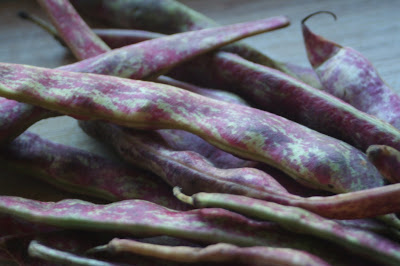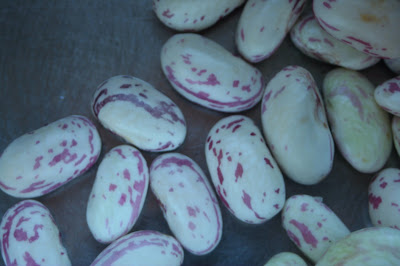This week's blizzard wasn't good for very much. But it did accomplish one thing - it helped me clear out the pantry! Boy, did it feel good to prepare an entire week's worth of meals without spending a dime. I actually made it through an entire week without a trip to the grocery, and with only one trip to a neighbor to borrow an egg.
The prospect of a trek in the snow really sparked creativity! That dusty can of coconut milk and bag of frozen corn were put to very good use for a curried corn dish that really hit the spot. The flavors were rich and inviting, just the right balance of spice and sweetness.
Curried Corn (from Moosewood Restaurant New Classics )
)
This recipe can be prepared ahead of time, refrigerated for a couple of days, and rewarmed in the microwave. Serve it next to some rice or with some good bread for mopping up the sauce. You'll want to savor every bit of this well flavored stuff.
2 tablespoons butter (or oil, if you want to make this vegan)
1 medium onion, diced
2 teaspoons good quality curry powder
3 cups frozen corn kernels
1 14-oz. can of coconut milk (reduced fat is fine if you prefer)
1 tablespoon lime juice
salt and pepper
sliced scallions (optional) as garnish
In a frying pan that has a lid, warm the butter and then saute the onion for a few minutes. Add the curry powder, stir well, and saute for another few minutes until the spices darken and the onions are lightly golden and soft.
Stir in the corn, cover, and heat for about 10 minutes, stirring occasionally.
Pour in the coconut milk, stir, cover, and heat thoroughly over medium-low heat. Make sure not to bring it to a boil.
When the corn is tender and hot, remove it from the heat and stir in the lime juice and salt and pepper to taste.
Sprinkle with the scallions, if desired, and serve hot or warm.






































